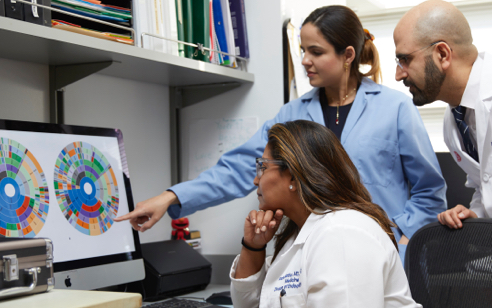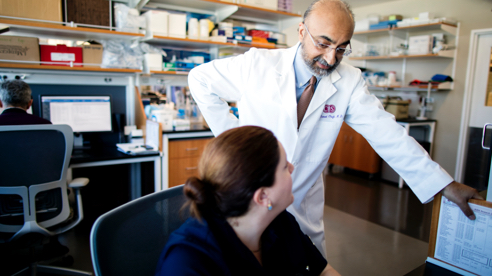Data Analytics Core
The Data Analytics Core is one of the 4 required core elements of the MHDS curriculum. This core comprises 2 courses: Health Analytics: Collecting, Analyzing and Visualizing Big Data in Healthcare; and Introduction to Biostatistics.
Educational Objectives
- Learn how health analytics can support a more efficient, more effective and less expensive healthcare system
- Recognize how big-data principles—volume, variety, velocity and validity—can support healthcare analytics
- Evaluate models of how to converge disparate data to support healthcare delivery and outcomes
- Learn how to select the optimal data display to present health-analytics data, appreciate the art and science of data visualization and learn how to use Tableau software to optimize data displays
- Study examples of accessing, managing and analyzing information in healthcare data warehouses
- Develop advanced skills in manipulating and analyzing datasets using Microsoft Excel
- Learn the basic principles of healthcare surveys, analytics of patient-reported data and the importance of thick data vs. big data
- Study key principles of biostatistics and learn how to apply them to measure the performance and outcomes of healthcare
- Learn how to use R statistical software to import, clean, manipulate, analyze and visualize healthcare data
Course Descriptions

Health Analytics: Collecting, Analyzing and Visualizing Big Data in Healthcare (HDS 200A)
Introduces students to the evolving concepts of big data and reviews how networks of data inform healthcare analytics. The overarching goal of HDS 200A is for students to gain familiarity with modern health analytic techniques.
For some of these techniques, the objective will be to develop mere familiarity and knowledge about how the technique is used, what questions it can answer and who to talk to if students ever want to employ the technique—for example, ATLAS.ti coding of text data and performance of computerized conjoint analysis.
For other techniques, the objective is to acquire hands-on skills—for example, data importing, analysis, visualization and reporting using Microsoft Excel and Tableau. In all cases, students will think critically about how to use these techniques to build a more efficient, more effective and less expensive healthcare system.
Introduction to Biostatistics (HDS 200B)
Builds off HDS 200A by introducing students to key principles of biostatistics, including confounding, bias, descriptive statistics, , hypothesis testing, confidence intervals, power calculations, t-test and chi-squared tests, analysis of variance and multiple linear, and logistic regression analysis.
The course includes lab sessions to familiarize students with using statistical software programs.

Have Questions or Need Help?
If you have questions or wish to learn more about the MHDS program, please contact:
Graduate School of Biomedical Sciences
8687 Melrose Ave.
Suite G-532
West Hollywood, CA 90069
